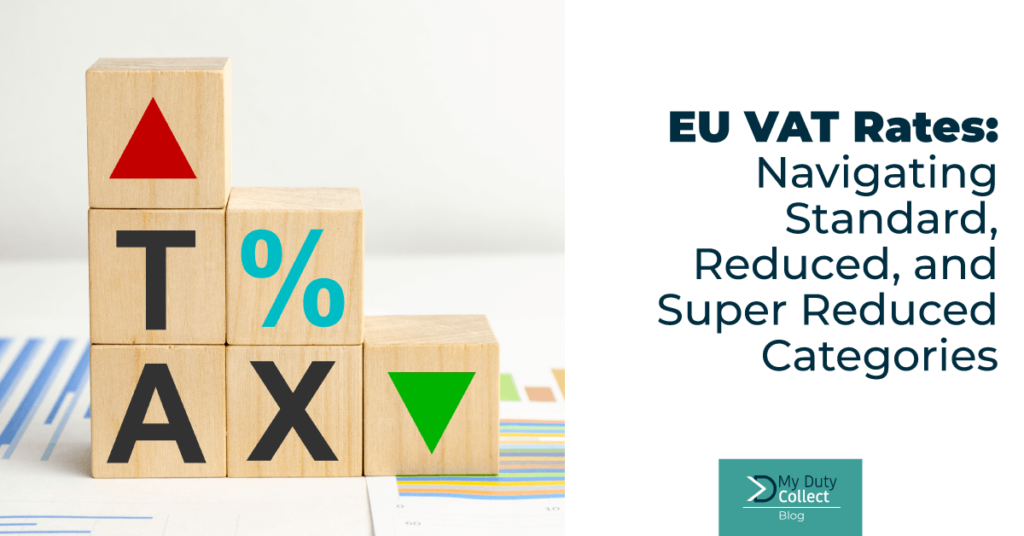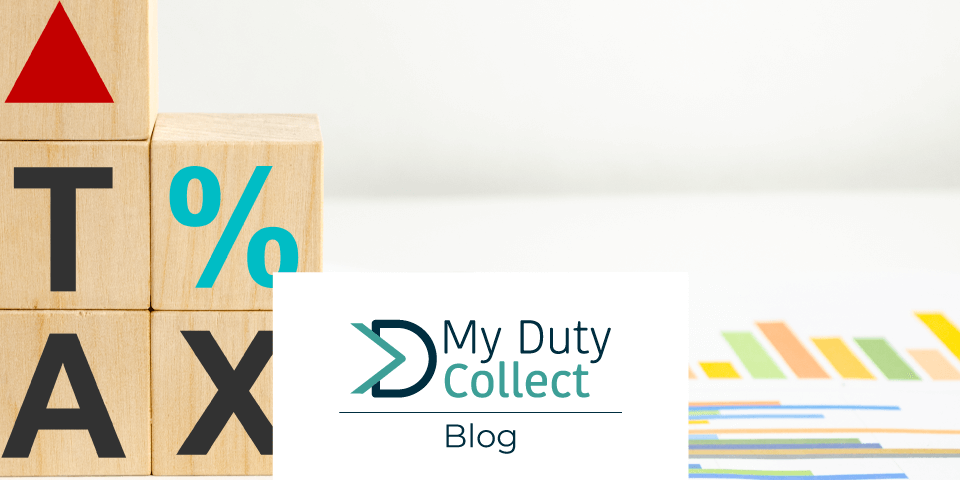Value Added Tax (VAT) is a pivotal component of the European Union’s economic structure, influencing everything from consumer prices to cross-border trade. A fundamental feature of VAT is classifying goods and services into distinct rate categories. In the EU, these categories are the Standard, Reduced, and Super Reduced VAT rates. In this blog post, we’ll delve into these VAT rate structures, providing insights into their implications for businesses, consumers, and the economy.
–
READ MORE: Can Businesses Still Get Registered for IOSS?
–
Unveiling the Three VAT Rate Categories
1- Standard Rate
The Standard VAT rate is the baseline rate applied to a broad range of goods and services. It forms the standard tax burden that most consumers and businesses encounter in their daily transactions. This rate varies among EU member states, often influenced by economic conditions, policy objectives, and historical factors.
2- Reduced VAT Rate
The Reduced VAT rate is an intriguing category, encompassing items considered essential or deserving of lower taxation. This rate often applies to goods and services with a significant societal impact, such as basic necessities, cultural items, and certain services. While designed to ease the tax burden on these items, the specifics of what qualifies for the reduced rate can vary considerably from one country to another.
3- Super Reduced Rate
The Super Reduced VAT rate is the lowest tier of taxation within the VAT framework. It typically covers goods and services of critical importance, such as vital food items, medical supplies, and publications. This ultra-low rate aims to ensure affordability and accessibility for essential commodities, reflecting the EU’s commitment to social welfare and public health.
Navigating the Complexities
While these rate categories might seem straightforward, the intricacies of their implementation and variations across EU member states can be quite complex. Different nations apply different items to these categories, creating a nuanced patchwork of tax rates across the region. Businesses operating across borders must navigate these differences to accurately price their offerings and comply with tax regulations.
Impact on Business and Consumers
The application of varying VAT rates has significant implications for both businesses and consumers. Businesses must adapt their pricing strategies to accommodate the appropriate VAT rate for each product or service. For consumers, these rates can influence purchasing decisions, with goods subject to reduced or super-reduced rates often being more affordable and accessible.
For a comprehensive resource on EU VAT rate structures, their implications, and their variations across member states, you can explore the official European Commission’s webpage on VAT rules and rates: europa.eu/youreurope/business/taxation/vat/vat-rules-rates/index_en.htm. This page provides detailed insights into how different VAT rate categories apply, along with valuable information for businesses and individuals seeking to understand the nuances of VAT across the European Union. Whether you’re a business owner, a consumer, or simply curious about VAT rates in the EU, this resource offers a reliable reference point for more in-depth exploration.

Non-EU businesses looking to trade with the EU must navigate a complex VAT system. By understanding the rules and requirements for VAT registration, cross-border transactions, invoicing, and maintaining accurate records, non-EU businesses can ensure compliance and avoid penalties. By following these tips, non-EU businesses can ensure that they remain VAT-compliant in the EU.
Understanding the differentiation between Standard, Reduced, and Super Reduced VAT rates is pivotal for comprehending the dynamics of the EU’s taxation landscape. The intricate interplay between these rates underscores the complexity of economic policies within the union. As you navigate the world of EU VAT, keep in mind that behind these rates lie broader objectives of promoting economic growth, social welfare, and fair taxation.




